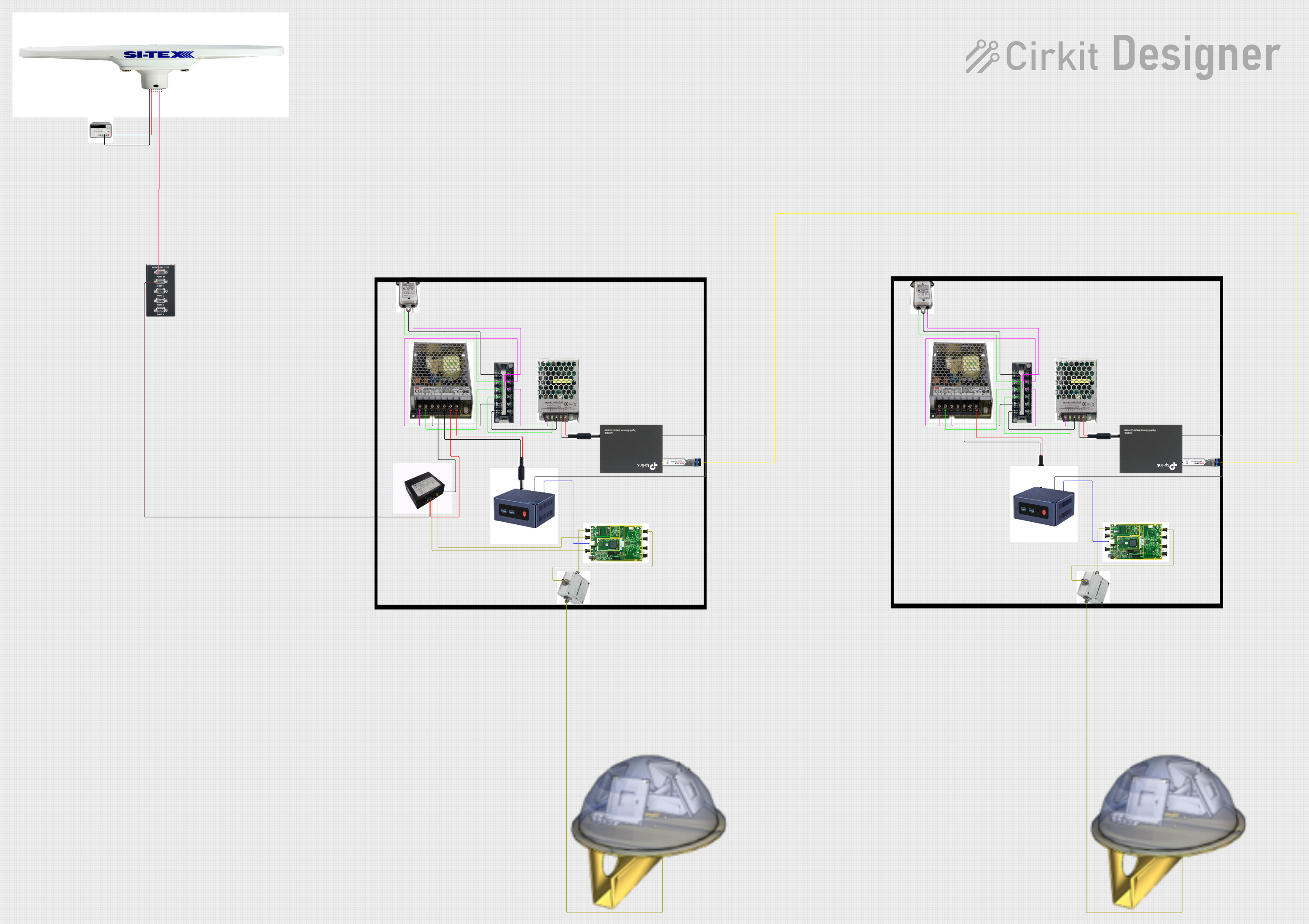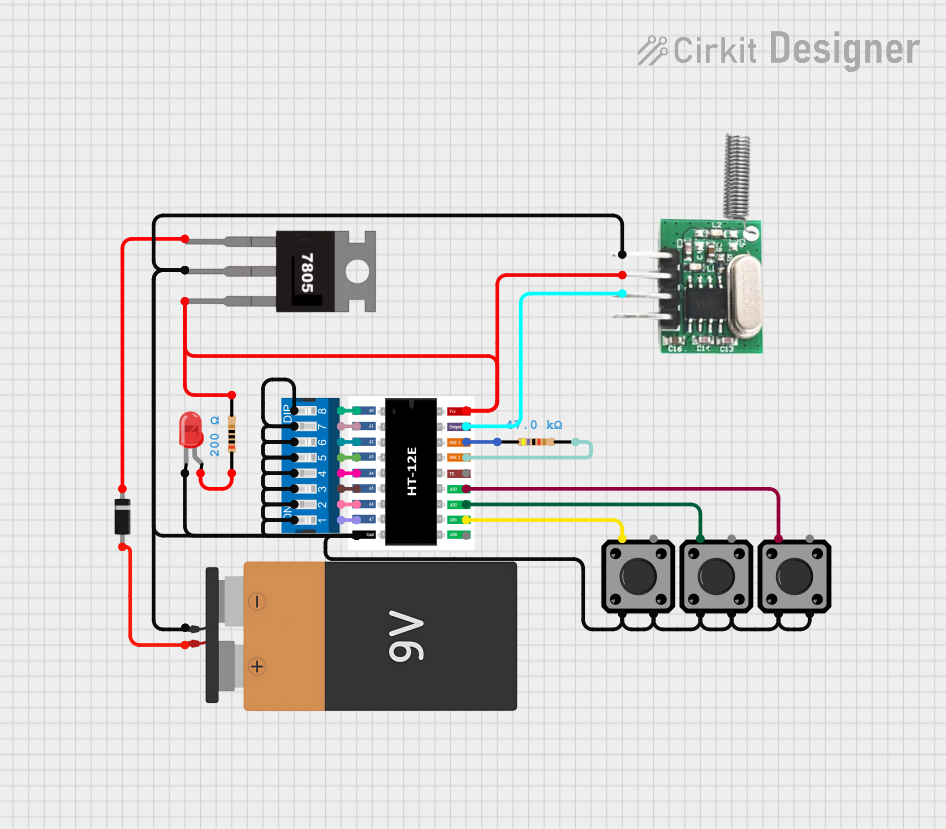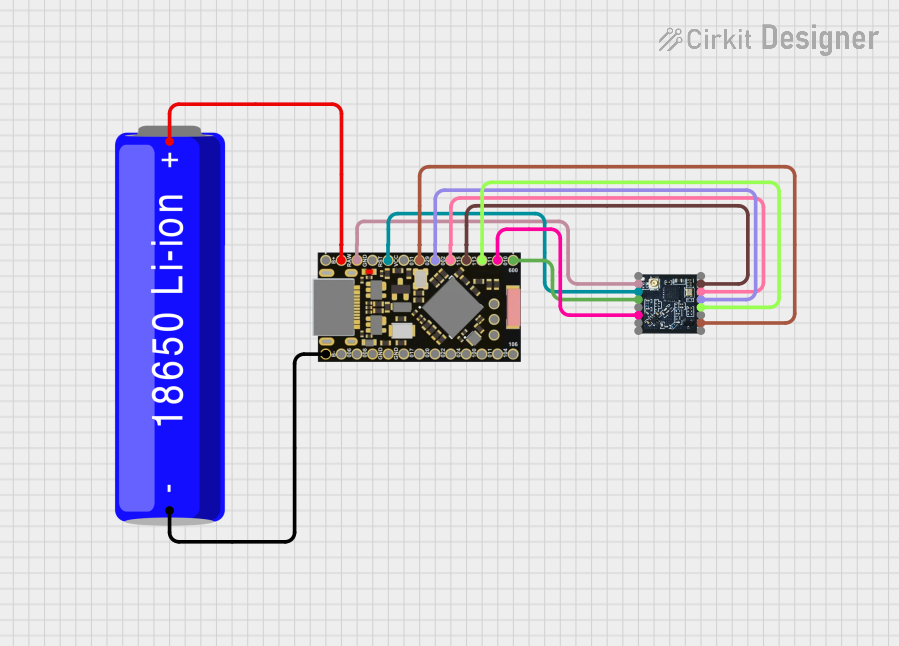
How to Use TS832 TRANSMITTER: Examples, Pinouts, and Specs

 Design with TS832 TRANSMITTER in Cirkit Designer
Design with TS832 TRANSMITTER in Cirkit DesignerIntroduction
The TS832 Transmitter by AKK (Part ID: VTX) is a 5.8GHz wireless video transmitter designed for long-distance video signal transmission. It is widely used in First Person View (FPV) applications, such as drones, RC vehicles, and other remote-controlled systems. The TS832 provides a reliable, high-quality video transmission with adjustable power output and multiple selectable channels, ensuring minimal interference and optimal performance.
Explore Projects Built with TS832 TRANSMITTER

 Open Project in Cirkit Designer
Open Project in Cirkit Designer
 Open Project in Cirkit Designer
Open Project in Cirkit Designer
 Open Project in Cirkit Designer
Open Project in Cirkit Designer
 Open Project in Cirkit Designer
Open Project in Cirkit DesignerExplore Projects Built with TS832 TRANSMITTER

 Open Project in Cirkit Designer
Open Project in Cirkit Designer
 Open Project in Cirkit Designer
Open Project in Cirkit Designer
 Open Project in Cirkit Designer
Open Project in Cirkit Designer
 Open Project in Cirkit Designer
Open Project in Cirkit DesignerCommon Applications
- FPV drones and quadcopters
- Remote-controlled cars and boats
- Wireless video surveillance systems
- Robotics and unmanned vehicles
- Long-range video transmission for hobbyists and professionals
Technical Specifications
Key Technical Details
| Parameter | Specification |
|---|---|
| Operating Frequency | 5.8GHz |
| Channels | 40 selectable channels |
| Output Power | Adjustable: 600mW |
| Input Voltage | 7V - 24V DC |
| Current Consumption | 220mA at 12V |
| Video Input Format | NTSC/PAL |
| Antenna Connector | RP-SMA Male |
| Dimensions | 54mm x 32mm x 10mm |
| Weight | 21g |
| Operating Temperature | -10°C to 85°C |
| Transmission Range | Up to 5km (line of sight, with proper antenna) |
Pin Configuration and Descriptions
The TS832 Transmitter has a 5-pin connector for power and video input. Below is the pinout:
| Pin Number | Label | Description |
|---|---|---|
| 1 | GND | Ground connection |
| 2 | +V IN | Power input (7V - 24V DC) |
| 3 | VIDEO IN | Composite video input |
| 4 | AUDIO IN L | Left audio channel input |
| 5 | AUDIO IN R | Right audio channel input |
Usage Instructions
How to Use the TS832 in a Circuit
- Power Supply: Connect the +V IN pin to a DC power source (7V - 24V) and the GND pin to ground. Ensure the power source can supply at least 220mA at 12V.
- Video Input: Connect the VIDEO IN pin to the composite video output of your camera or video source.
- Audio Input (Optional): If audio transmission is required, connect the AUDIO IN L and AUDIO IN R pins to the left and right audio outputs of your source.
- Antenna: Attach a 5.8GHz antenna to the RP-SMA connector. Use a high-gain antenna for extended range.
- Channel Selection: Use the DIP switches on the transmitter to select the desired frequency channel. Refer to the channel table in the TS832 datasheet for switch settings.
Important Considerations and Best Practices
- Cooling: The TS832 can become hot during operation. Ensure proper ventilation or use a heat sink to prevent overheating.
- Antenna Connection: Always connect the antenna before powering on the transmitter to avoid damage to the RF circuitry.
- Frequency Selection: Choose a channel that minimizes interference with other devices operating in the 5.8GHz band.
- Power Regulation: Use a stable power supply to avoid voltage fluctuations that could affect performance.
Example: Connecting TS832 to an Arduino UNO
While the TS832 is not directly controlled by an Arduino, you can use an Arduino to switch the transmitter on/off or control peripherals like cameras. Below is an example of using an Arduino to toggle the TS832 power via a relay:
// Example: Controlling TS832 power with Arduino and a relay module
const int relayPin = 7; // Pin connected to the relay module
void setup() {
pinMode(relayPin, OUTPUT); // Set relay pin as output
digitalWrite(relayPin, LOW); // Ensure relay is off at startup
}
void loop() {
// Turn on the TS832 transmitter
digitalWrite(relayPin, HIGH);
delay(10000); // Keep transmitter on for 10 seconds
// Turn off the TS832 transmitter
digitalWrite(relayPin, LOW);
delay(5000); // Keep transmitter off for 5 seconds
}
Troubleshooting and FAQs
Common Issues and Solutions
| Issue | Possible Cause | Solution |
|---|---|---|
| No video signal on the receiver | Incorrect wiring or loose connections | Verify all connections and wiring. |
| Overheating during operation | Insufficient cooling or ventilation | Add a heat sink or improve airflow. |
| Poor video quality or interference | Channel conflict or weak antenna signal | Change channel or use a better antenna. |
| No power to the transmitter | Incorrect power supply | Ensure input voltage is 7V - 24V DC. |
| Antenna not transmitting properly | Antenna not connected or damaged | Check and replace the antenna. |
FAQs
Can I use the TS832 with a 5V power source?
- No, the TS832 requires a minimum input voltage of 7V. Use a step-up converter if needed.
What is the maximum range of the TS832?
- The range can reach up to 5km in ideal conditions (line of sight, with a high-gain antenna).
How do I select a channel on the TS832?
- Use the DIP switches on the transmitter. Refer to the channel table in the datasheet for the correct switch configuration.
Can the TS832 transmit audio and video simultaneously?
- Yes, the TS832 supports simultaneous transmission of video and stereo audio.
Is the TS832 compatible with all 5.8GHz receivers?
- The TS832 is compatible with most 5.8GHz receivers that support the same frequency range and channels.
This concludes the documentation for the TS832 Transmitter. For further assistance, refer to the official datasheet or contact AKK support.